Our Editors
Editor in Chief
-
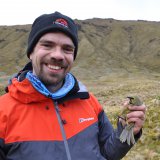
Alexander L. Bond
The Natural History Museum, Tring, Hertfordshire, UK
Broadly speaking, I’m a conservation biologist, with a focus on birds on islands and in the marine environment, and the effects of pollution on ecosystems. My main focus is the effect of invasive species on island fauna, threats to seabirds at-sea, and pollution, mainly plastics and trace elements. As the curator in charge of the Natural History Museum’s ca. 1 million bird specimens, I also examine and facilitate studies of avian traits, distributions, systematics, taxonomy, and historical ecology. I’m also the co-lead of the Adrift Lab (https://adriftlab.org/)
Themes: seabirds, conservation, invasive species, islands, pollution
-

Jennifer L. Lavers
Esperance Tjaltjraak Native Title Aboriginal Corporation
My research areas encompass the direct and indirect effects of chemical and physical pollution, especially plastics, on wildlife and habitats in the Southern Hemisphere. Particular interest in sub-lethal effects, quantifying population-level impacts, developing robust methods to ensure data are collected in a systematic and repeatable manner, and identification of mitigation techniques that minimise harm to ecosystems or reduce/eliminate waste production. Strong believer that tackling the big questions in science requires collaborative, multidisciplinary approaches that engage the wider community.
Themes: Marine biology; Pollution ecology
Editor block – please see right sidebar for options.
Editorial Board
-
Nicholas J. Bayly
SELVA: Investigación para la Conservación en el NeotropicoNick Bayly is the migratory species manager at the Colombian NGO SELVA. His research interests include the determination of bird migration strategies to facilitate the conservation of habitats on which the success of migration depends, the wintering ecology of migrants in the Neotropics and in answering basic ecological questions about understudied threatened and endemic Neotropical birds. He is currently working on the Neotropical Flyway Project, which aims to identify critical stopover regions in Central America and northern South America through broad-scale occupancy surveys, mark-recapture mist-netting stations and the deployment of radio-transmitters. As a certified bird bander since the age of 16, he is also passionate about molt strategies and monitoring techniques.
Themes: migration ecology, conservation, habitat quality, Neotropical biodiversity, molt
-
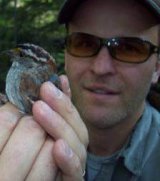
Erin Bayne
Department of Biological Sciences, University of Alberta, Edmonton, AB, T6G 2E9 CanadaErin is an associate professor in the Department of Biological Sciences at the University of Alberta. His research centers on understanding the cumulative ecological impacts of human activities on biodiversity, with birds as a focus. His research combines behavioral, population, and community ecology in combination with cutting edge techniques in wildlife monitoring, survey design, geographic information systems, and habitat modelling to achieve this goal. Current areas of emphasis include understanding the factors driving population dynamics of prairie raptors across their entire annual cycle, continental scale modelling of human land-use & climate change impacts on birds, and the use of automated recording technology for improving the capability of environmental monitoring.
Themes: population dynamics, biodiversity monitoring, avian conservation, density estimation, scenario modelling
-
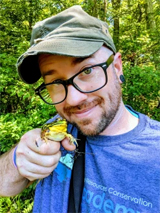
Kevin R. Burgio
U.S. Fish and Wildlife ServiceI am a Renewable Resources Biologist for the U.S. Fish and Wildlife Service. I am broadly interested in the processes that form and limit where species are distributed. I use an integrative approach to examine historical ecology, community assembly, biogeography, biodiversity patterns, the effects of climate change on communities, and extinction. My goal is to help bridge the divide between ecological theory and on-the-ground conservation to make the best possible decisions for both today and the future.
Themes: community ecology, species distribution modelling, biodiversity, extinction, biogeography, historical ecology, urban ecology, parrots, passerines
-
Andrew J. Campomizzi
Bird Ecology and Conservation Ontario; Trent UniversityAndrew’s research examines spatial and temporal patterns of avian distribution, abundance, and reproductive success. His goal is to contribute to a better understanding of avian ecology to provide practical information for conservation. Andrew uses various approaches to address research questions including field and lab research, analyzing new and existing datasets, fitting statistical models and simulating data, and using geographic information systems.
Themes: conservation, demography, habitat selection, study design
-

Sergio A. Cabrera Cruz
Insituto de Ecología A.C. (INECOL)I am an associate researcher at Instituto de Ecología A.C. (INECOL) in Mexico. My interests range from describing the basic patterns of bird migration through Mexico and other Neotropical areas, to evaluating the impact that anthropogenic factors and activities have on migratory birds, both on the ground and aloft in the aerial habitat.
Themes: aeroecology, anthropogenic impacts, environmental impacts, migration ecology, radar
-
André A. Dhondt
Cornell University, USAAndré’s research is diverse. He is a population and behavioral ecologist who became a disease ecologist after he started a study on the interactions between the bacterium Mycoplasma gallisepticum and house finches. He his still very interested in interspecific competition.
Themes: disease ecology, population ecology, behavioral ecology, citizen science
-
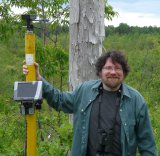
Pierre Drapeau
Université du Québec à Montréal, CanadaPierre’s research program is focusing on the patterns and processes that are structuring bird assemblages in naturally disturbed and timber managed landscapes, particularly with regards to the cavity-nesting bird community and its complex biotic interactions. This research is aimed at determining conservation targets that allow persistence of birds in managed landscapes and reduce the gap with landscapes under natural disturbance regimes. He and his students use field approaches that range from point counts, playbacks and spot-mapping to nest monitoring of breeding bird populations in landscapes under different disturbance dynamics (natural and human-induced). His research interests also include food webs with regards to trophic links between birds, saproxylic insects and decaying trees in forest ecosystems.
Themes: Habitat alteration, population and community ecology, changing landscapes, habitat selection, deadwood ecology, conservation targets
-
Brad Fedy
University of WaterlooMy research examines factors that influence fitness of animal populations at multiple scales-from genes to landscapes. The impetus for most of my research emerges from important conservation issues; however, I also endeavor to answer general ecological questions to improve concepts and theory in ecology and evolution. I focus on questions examining habitat prioritization, landscape genetics, population trends, and social behaviour.
Themes: landscape genetics, habitat selection, population trends, Tetraoninae
-

Auriel M.V. Fournier
Illinois Natural History Survey, University of IllinoisAuriel is the Director of Forbes Biological Station, a part of the Illinois Natural History Survey, Prairie Research Institute, University of Illinois. She is a wetland bird ecologist who’s work focuses on the management of wetlands, as well as using structured decision making to tackle natural resource conservation problems.
Themes: wetlands, migration, rallidae
-
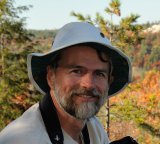
Charles M. Francis
Canadian Wildlife Service, Environment and Climate Change Canada, Ottawa, Ontario, CanadaMy primary responsibility with Environment Canada is coordinating and managing bird monitoring programs in Canada, developing ways to improve bird-monitoring programs using novel approaches, and supporting activities to evaluate the effects of various stressors such as habitat loss and collisions with wind turbines and other structures on bird populations. Current research projects in my group include developing new tools and procedures to incorporate technologies such as digital microphones and recorders into bird monitoring programs; use of radars to measure patterns of bird and bat migration in relation to threats; using nocturnal flight calls and bat detectors to monitor birds and bats; developing improved statistical methods using Hierarchical Bayes to analyze bird monitoring data; and modeling bird population dynamics using mark-recapture data sets from bird marking programs.
Themes: demographic modelling, population monitoring, status assessment
-
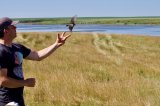
Kevin Kardynal
Wildlife Research Division, Environment and Climate Change Canada, Saskatoon, SK, CanadaKevin is a Wildlife Research Biologist with the Wildlife Research Division of Environment & Climate Change Canada and is based in Saskatoon, Saskatchewan. His research focuses on understanding stressors influencing wildlife populations, particularly birds, migratory connectivity using state of the art techniques including geolocation, transmitters and stable isotopes, cross-ecosystem nutrient subsidies, contaminants and full annual cycle conservation. His work occurs across multiple ecosystems including the boreal forest, prairies, marine and Neotropical and sub-tropical regions. Currently, his work focuses on understanding aerial insectivore declines, boreal bird dynamics and international conservation.
Themes: stable isotopes, migratory connectivity, aerial insectivore, boreal forest, wetlands, Neotropics
-
Dave Londe
U.S. Fish and Wildlife ServiceDave is a Zone Biologist for the U.S. Fish and Wildlife Service’s National Wildlife Refuge System. He is based out of Central Oklahoma, USA and works with National Wildlife Refuges that span a diversity of ecosystems ranging from eastern hardwood forests to arid grasslands. His current research includes understanding the effects of climate change on wetland ecosystems, using quantitative methods to describe species movement behavior and habitat selection patterns with the goal of guiding and improving management on public lands.
Themes: Grassland Birds; Habitat selection; Movement Ecology; Population Ecology
-
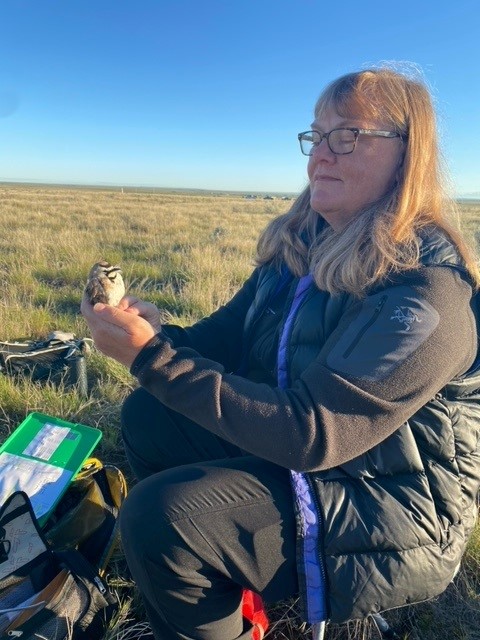
Nancy A. Mahony
Environment and Climate Change Canada, Wildlife Research Division, Edmonton, Alberta, CanadaI am Research Scientist for the Wildlife Research Division of Environment and Climate Change Canada based in Edmonton, Alberta. My current research focus is prairie grassland songbird conservation and ecology but my background includes conservation-focused research on aerial insectivores, and forest and wetland birds in Ontario, British Columbia, Alberta and Saskatchewan.
Themes: Grassland Birds; Aerial Insectivores; Bird conservation ecology
-

Elizabeth Masden
University of the Highlands and IslandsMy current research focuses on i) the potential ornithological impacts of human activities such as marine renewable energy developments as well as oil and gas extraction on the environment, and ii) the impacts of marine litter on seabirds. I also have an interest in cumulative impacts but more generally I am interested in population dynamics and spatial ecology including animal movement.
-

Nicole Michel
National Audubon SocietyNicole is Director of Quantitative Science with the National Audubon Society. Her primary research focus is developing large-scale modeling efforts to understand trends and spatial patterns in bird abundance, occupancy, and occurrence; and delineate climate and habitat relationships. Her work also involves developing metrics to evaluate and quantify population- and community-level responses to conservation and management actions. Nicole’s goal is to harness quantitative tools to inform, advance, and refine bird conservation and management.
Themes: quantitative ecology; modeling; conservation; metrics; bird-habitat relationships; climate; population trends; abundance; occupancy; data integration;
-
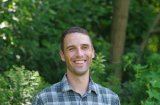
Greg Mitchell
Environment and Climate Change Canada, Wildlife Research Division / Carleton University, Department of Biology, Ottawa, Ontario, CanadaI am a research scientist with the Wildlife Research Division at Environment and Climate Change Canada and I am a adjunct professor in the Biology Department at Carleton University in Ottawa, Ontario, Canada. My research program broadly focuses on understanding the drivers of population declines in migratory birds and Species at Risk that live in or move through human dominated ecosystems across southern Canada. More specifically, my research program currently focuses on 1) how landscape composition and configuration influences avian diversity in agro-ecosystems, 2) post-fledging/breeding survival, movement, and habitat associations, and 3) identifying high-quality stopover habitat for migrant land birds. I use a variety of tools and approaches that span the fields of movement ecology, conservation physiology, population ecology, and community ecology.
Themes: movement ecology, landscape ecology, conservation physiology, migration, stopover, habitat selection
-
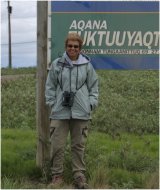
Erica Nol
Department of Biology, Trent University, Peterborough, Ontario, CanadaErica Nol is a Professor of Biology at Trent University, Peterborough, Ontario. Her research focuses on the biology and conservation of arctic and sub-arctic breeding shorebirds in North America as well as anthropogenic factors influencing demography of songbirds in a variety of habitats in Southern Ontario. She is Past-President of the Society of Canadian Ornithologists and currently serving as Vice-President of the Waterbird Society.
Themes: shorebird conservation and ecology, land-bird conservation, forests and birds
-
Gregory J. Robertson
Wildlife Research Division, Environment and Climate Change Canada, Mount Pearl, Newfoundland and Labrador, CanadaDr. Robertson has been working on marine fish and wildlife issues for the Government of Canada for over 30 years, with a particular focus on developing approaches to estimating mortality when information is limited and hampering evidence-based decision-making.
Themes: survival analysis; population modeling; coastal and marine birds
-
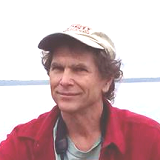
John R. Sauer
USGS Patuxent Wildlife Research Center, USAI participate in a variety of research projects united by the general themes of population ecology, survey design and analysis, geographic and temporal analysis of population change, analysis of count data, geographical ecology, and summary and display of large-scale surveys.
Themes: birds, population change, population ecology, surveys.
-
Jean-Pierre L. Savard
Environment Canada, CanadaRetired in 2012 from Environment Canada. Emeritus Scientist for Environment Canada since 2012. Research interest include urban birds, forest birds and sea ducks.
Themes: urban birds, forest birds, sea ducks,
-
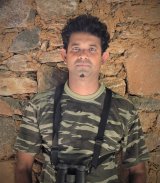
Sampath S. Seneviratne
Department of Zoology & Environment Sciences, University of ColomboI am a research scientist, a university teacher and a birder. My research interests are rooted in the studies of island biogeography, causes of endemicity and the evolution of novel traits. My approach uses both field- and laboratory-based research grounded in a strong conceptual framework to address processes underlying trait divergence and species (trait) boundaries – mainly in birds. Sri Lanka, where most of my field sites are located, in particular offers a great assortment of species assemblages to study critical questions related to speciation in island biogeographic framework.
Themes: Avian Biology, Evolutionary Ecology, Endemicity, Island Biogeography, Migration Ecology, Central Asian Flyway, Species Descriptions, Bird Taxonomy, Sexual Selection
-
Dave Shutler
Acadia University, CanadaI’m a professor of Biology and have been at Acadia since 1998. I study reproductive ecology of tree swallows and Leach’s storm-petrels, and also do research on honey bee parasites.
Themes: reproductive ecology, parasites, stressors
-
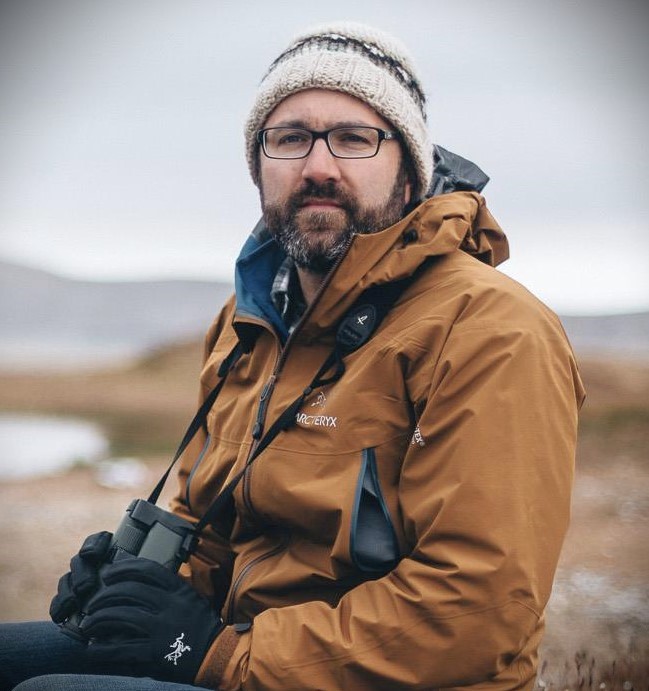
Paul A. Smith
Wildlife Research Division, Environment and Climate Change CanadaI’m a conservation biologist who specializes in the study of Arctic ecosystems, and migratory birds in particular. My research explores the drivers of population declines in Arctic wildlife, from environmental change and other factors. I also work at the national and international scale to develop new tools and approaches for conserving and monitoring wildlife.
Themes: bird breeding behaviour, arctic bird populations, bird monitoring techniques and programs, breeding ecology, bird conservation
-
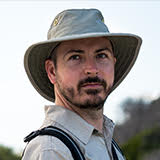
Scott A. Taylor
University of Colorado BoulderScott Taylor is an Assistant Professor in the Department of Ecology and Evolutionary Biology at the University of Colorado Boulder. Research in his lab is focused on using natural hybrid zones and recent radiations to understand the genetic bases of traits involved in reproductive isolation, population divergence, and speciation, and the impacts of anthropogenic change, including climate change, on species distributions, interactions, and evolution. He and his lab are fascinated by natural history and the intersections between art and science, and are committed to doing their part to increase diversity and make our community inclusive and supportive.
Themes: hybridization, speciation, genomics, natural history
-
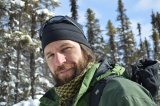
Junior A. Tremblay
Wildlife Research Division, Environment and Climate Change Canada, QuebecMy research program aims to understand the potential impact of natural and anthropogenic disturbances and climate change on habitat selection and demographic parameters of boreal forest birds in an annual life history context, with a particular interest in species at risk. Mon programme de recherche vise à comprendre l’impact potentiel des perturbations naturelles et anthropiques et des changements climatiques sur la sélection de l’habitat et les paramètres démographiques des oiseaux de la forêt boréale dans un contexte de cycle vital annuel, avec un intérêt particulier aux espèces en péril.
Themes: boreal forest, natural disturbances, forest management, climate change, breeding ecology
-
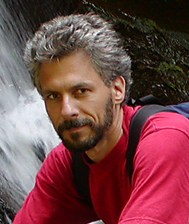
Marc-André Villard
Department of Biology, Mount Allison University, Sackville, New Brunswick, Canada E4L 1G7Marc-André’s research program focuses on processes underlying species response to human activities, mainly at the population level. He is especially interested in landscape-level processes such as dispersal, and ecosystem-level processes influencing the survival of nests and juveniles, as well as recruitment rate. He and his students use approaches ranging from intensive spot mapping surveys and monitoring of banded populations to stable isotope analysis to examine population dynamics under various degrees of habitat loss, fragmentation, or degradation. His research interests also include the behavioural response of individuals to nest predation risk and to various habitat alterations associated with forest management, agriculture, or other human activities.
Themes: landscape ecology, habitat fragmentation, population ecology, behaviour, conservation
-
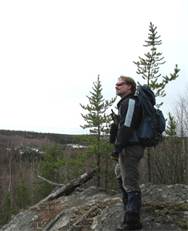
Steven L. Van Wilgenburg
Environment and Climate Change Canada, Canadian Wildlife ServiceSteve’s main interest lies in understanding factors limiting populations of migratory birds throughout their annual cycle, with an emphasis on the conservation and management of boreal forest birds. Steve is involved in research and monitoring including the design and implementation of monitoring programs for boreal forest birds, conservation of migratory birds and their habitats at sites used throughout the annual cycle, R&D for tracking migration and monitoring birds, and science to support the recovery of threatened species.
Themes: boreal forest, conservation, migration, forestry, acoustic monitoring
-
Michael B. Wunder
University of Colorado DenverMy research interests are focused on the ecological, behavioral, and evolutionary dynamics of migratory animal populations, and how those are related to demographics and decision making for management and conservation.
Themes: stable isotope ecology, migration, demographic models, survival models, mark-recapture, hierarchical models, occupancy models, abundance estimation
-

Ding Li Yong
BirdLife InternationalI conducted my doctoral research on woodland ecology and conservation planning at the Australian National University in Canberra. Prior to this, I have worked widely in tropical Asia, including in Indonesia, Malaysia and the Philippines. I am currently at BirdLife International where i coordinate projects on migratory species conservation and conservation policy in Asia. I am especially interested bird assemblages in tropical forest fragments, migration ecology of Asian landbirds, systematic conservation planning, and the interface of conservation science and policy-making.
Themes: tropical forest fragments, Asian migratory landbirds, coastal wetland ecology, wildlife trade
